Friend Of The Day!
friend of the day!
you’ve met handsome roundboy, now we introducing….
His Royal Flatness, mexican burrowing toad!

SO FLAT! i am swooning

a face of a king

perfect is he body

i trust him

I love him
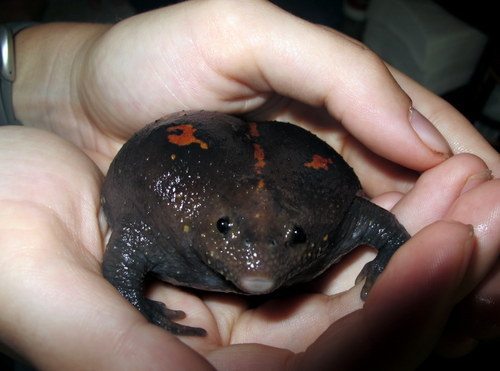
beautiful smile of toad

he know you love him too!
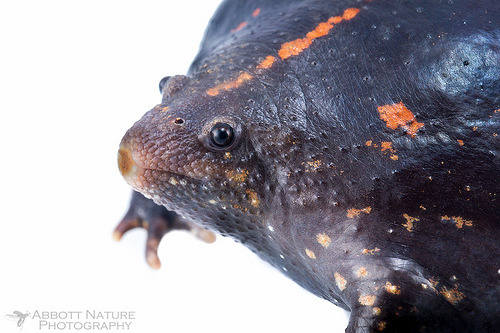
in he come for a kiss!

thank you goodbye!!
More Posts from Llamaslikesciencetoo and Others









One animal’s trash is a vampire squid’s dinner! From a larvacean into the marine snow, a vampire squid meal means it’s time to boogie!
This footage is courtesy of our partners at the Monterey Bay Aquarium Research Institute (MBARI).
Their discovery of the vampire squid’s diet was an amazing moment—read all about it in here!

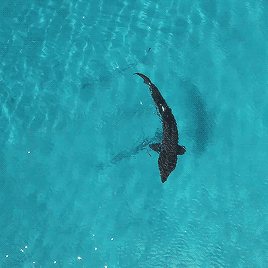
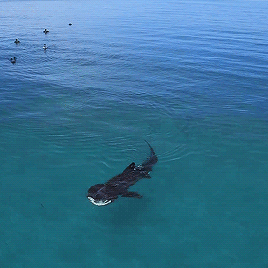
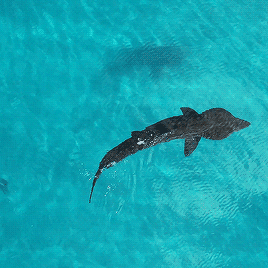


What’s Next for the World’s Most Trafficked Mammal?
Earlier this week, a U.S. agency announced that it will consider giving greater protection to pangolins.
What’s a pangolin, you might ask?
Pangolins are creatures found in Asia and Africa that have a pinecone-esque appearance. They’re about the size of house cats, are covered in scales, and have very long tongues for slurping up ants and termites.
These pest controllers are a hot commodity on the black market, poached for nearly all their body parts. Their meat is considered a delicacy in Asia. Their scales, made of keratin (the main ingredient in fingernails), are fashioned into jewelry or used as traditional medicine, even though they don’t have any curative value. Even their blood, a supposed aphrodisiac, is dried and used in potions.
Considered the most trafficked mammals in the world, tens of thousands of pangolins are believed to be poached annually—bad news for an animal whose females reproduce only once a year.
That’s why in July 2015, conservation groups such as the International Fund for Animal Welfare and the Center for Biological Diversity petitioned the U.S. Fish and Wildlife Service to list seven pangolin species under the Endangered Species Act, a law that seeks to conserve endangered or threatened species throughout their range (an eighth species, the Temnick’s ground pangolin, found in southern and eastern Africa, is already protected under the act).
And on March 15, the agency said the organizations made a good enough case that it’s now willing to invite the public to weigh in on the proposal for 60 days.
No one knows exactly how many pangolins remain in the wild, but researchers are pretty sure the animals’ numbers are shrinking. Two of the four Asian species, the Sunda and the Chinese pangolins, are considered to face a high risk of extinction and the other two are “endangered,” according to the International Union for the Conservation of Nature, which sets the conservation status of wildlife. With the depletion of the Asian pangolins, smugglers have targeted their cousins in Africa, which are faring better but are nonetheless described as “vulnerable.”
U.S. Involvement
If the seven species gain protection under the U.S. law, it would be illegal for people to import the animals or their parts into the country—unless they’re being brought in to promote conservation. Same thing for sales across state lines.
Keep Reading

Northern Elephant Seals, Monterey Bay National Marine Sanctuary, CA, USA
Northern elephant seals were once hunted for their blubber, and were thought to be extinct until a small colony was found in the early 20th century. Since then, thanks to conservation efforts, northern elephant seal populations along the California coast have made an amazing recovery. Now, we continue to work with the public to protect this species and others protected under the Marine Mammal Protection Act. Interested in wildlife watching when you visit sanctuaries? Make sure to give these seals – and all other animals – plenty of space so they can thrive. The future of the world’s wildlife is truly in our hands. Learn more about how you can help at: http://sanctuaries.noaa.gov/protect/oceanetiquette.html. Photograph: Mike Baird/NOAA
(via: NOAA Office of National Marine Sanctuaries)



Red-lined bubble snail (Bullina lineata)
The red-lined bubble snail, is a species of sea snail, a marine gastropod mollusc in the family Bullinidae. This snail has a milky-white mantle with iridescent blue edges. There are small black eyes on the head between the head shield processes. The shell has a white background with horizontally spiraling red brown bands which are crossed by vertical bands in the same color. The length is 15 to 25 mm. This species occurs in the sublittoral zone of the Indo-Pacific from Japan to Australia and New Zealand.
photo credits: seaslugsofhawaii, Sylke Rohrlach, Richard Ling


Microbiolgy & Virology flash cards i made today.
me, on a date: so what's your opinion on sharks?
them: oh my god they are such cold, heartless MONSTERS and-
me, shoving breadsticks in my purse: sorry but i have to go home, right now, immediately.



This new procedure is making it a little bit easier to deal with cancer treatment
Cancer patients who are undergoing chemo no longer have to suffer hair loss. A new cooling treatment, called the Dignicap, is placed on the head during chemo and protects the hair follicle by reducing blood flow. The process can be expensive, sometimes up to $600, but so far it’s been very effective and has helped cancer patients feel a little more comfortable throughout their treatment.
Killer whales are smart animals. This is what they do in their natural habitat:

Not this:





Photos of orcas underwater near Bremer Canyon, Australia.
-
 aaaawic liked this · 4 months ago
aaaawic liked this · 4 months ago -
 a-lump-of-tofu liked this · 4 months ago
a-lump-of-tofu liked this · 4 months ago -
 muttfisher liked this · 4 months ago
muttfisher liked this · 4 months ago -
 carsassians reblogged this · 4 months ago
carsassians reblogged this · 4 months ago -
 scionofurza411 reblogged this · 4 months ago
scionofurza411 reblogged this · 4 months ago -
 tacoma-narrows liked this · 4 months ago
tacoma-narrows liked this · 4 months ago -
 auggieoof liked this · 4 months ago
auggieoof liked this · 4 months ago -
 dynamo-of-fake-twin-brother-fame liked this · 4 months ago
dynamo-of-fake-twin-brother-fame liked this · 4 months ago -
 trinketbug reblogged this · 4 months ago
trinketbug reblogged this · 4 months ago -
 glass-clown reblogged this · 4 months ago
glass-clown reblogged this · 4 months ago -
 glass-clown liked this · 4 months ago
glass-clown liked this · 4 months ago -
 rachela1630 reblogged this · 4 months ago
rachela1630 reblogged this · 4 months ago -
 bleudinosaur reblogged this · 4 months ago
bleudinosaur reblogged this · 4 months ago -
 itzphynix reblogged this · 4 months ago
itzphynix reblogged this · 4 months ago -
 itslazi liked this · 5 months ago
itslazi liked this · 5 months ago -
 adjectiveadjectiveadjective reblogged this · 5 months ago
adjectiveadjectiveadjective reblogged this · 5 months ago -
 acy-art liked this · 5 months ago
acy-art liked this · 5 months ago -
 fvaleraye-doodles liked this · 5 months ago
fvaleraye-doodles liked this · 5 months ago -
 itzphynix reblogged this · 5 months ago
itzphynix reblogged this · 5 months ago -
 knighterrante reblogged this · 5 months ago
knighterrante reblogged this · 5 months ago -
 knighterrante liked this · 5 months ago
knighterrante liked this · 5 months ago -
 inkedscribbles liked this · 5 months ago
inkedscribbles liked this · 5 months ago -
 astranite reblogged this · 5 months ago
astranite reblogged this · 5 months ago -
 ultrasicalipsis liked this · 5 months ago
ultrasicalipsis liked this · 5 months ago -
 queenanne1532 reblogged this · 5 months ago
queenanne1532 reblogged this · 5 months ago -
 queenieschaoscorner reblogged this · 5 months ago
queenieschaoscorner reblogged this · 5 months ago -
 backstagebci reblogged this · 5 months ago
backstagebci reblogged this · 5 months ago -
 queenieschaoscorner liked this · 5 months ago
queenieschaoscorner liked this · 5 months ago -
 krayt-spitter21 reblogged this · 5 months ago
krayt-spitter21 reblogged this · 5 months ago -
 krayt-spitter21 liked this · 5 months ago
krayt-spitter21 liked this · 5 months ago -
 bog-sucker69 reblogged this · 5 months ago
bog-sucker69 reblogged this · 5 months ago -
 abs0lutely-feral liked this · 5 months ago
abs0lutely-feral liked this · 5 months ago -
 a-figment-world liked this · 5 months ago
a-figment-world liked this · 5 months ago -
 temporary-temporal-temper liked this · 5 months ago
temporary-temporal-temper liked this · 5 months ago -
 guevarache reblogged this · 5 months ago
guevarache reblogged this · 5 months ago -
 sometimesboffosometimesnot reblogged this · 5 months ago
sometimesboffosometimesnot reblogged this · 5 months ago -
 dreamsinbluess reblogged this · 5 months ago
dreamsinbluess reblogged this · 5 months ago -
 baztacular reblogged this · 5 months ago
baztacular reblogged this · 5 months ago -
 a-gay-frog reblogged this · 5 months ago
a-gay-frog reblogged this · 5 months ago -
 velocirabbit reblogged this · 5 months ago
velocirabbit reblogged this · 5 months ago -
 queenanne1532 reblogged this · 5 months ago
queenanne1532 reblogged this · 5 months ago -
 telepathicunibrow reblogged this · 5 months ago
telepathicunibrow reblogged this · 5 months ago -
 zillanovikov reblogged this · 5 months ago
zillanovikov reblogged this · 5 months ago -
 ilovemosss reblogged this · 6 months ago
ilovemosss reblogged this · 6 months ago -
 ilovemosss liked this · 6 months ago
ilovemosss liked this · 6 months ago -
 psychicbouquetofstars reblogged this · 6 months ago
psychicbouquetofstars reblogged this · 6 months ago -
 psychicbouquetofstars liked this · 6 months ago
psychicbouquetofstars liked this · 6 months ago -
 saragrosie liked this · 6 months ago
saragrosie liked this · 6 months ago -
 amemait reblogged this · 6 months ago
amemait reblogged this · 6 months ago -
 kiwikat0808 liked this · 6 months ago
kiwikat0808 liked this · 6 months ago
Mainly interested in ecology, but also the entirety of science.
179 posts